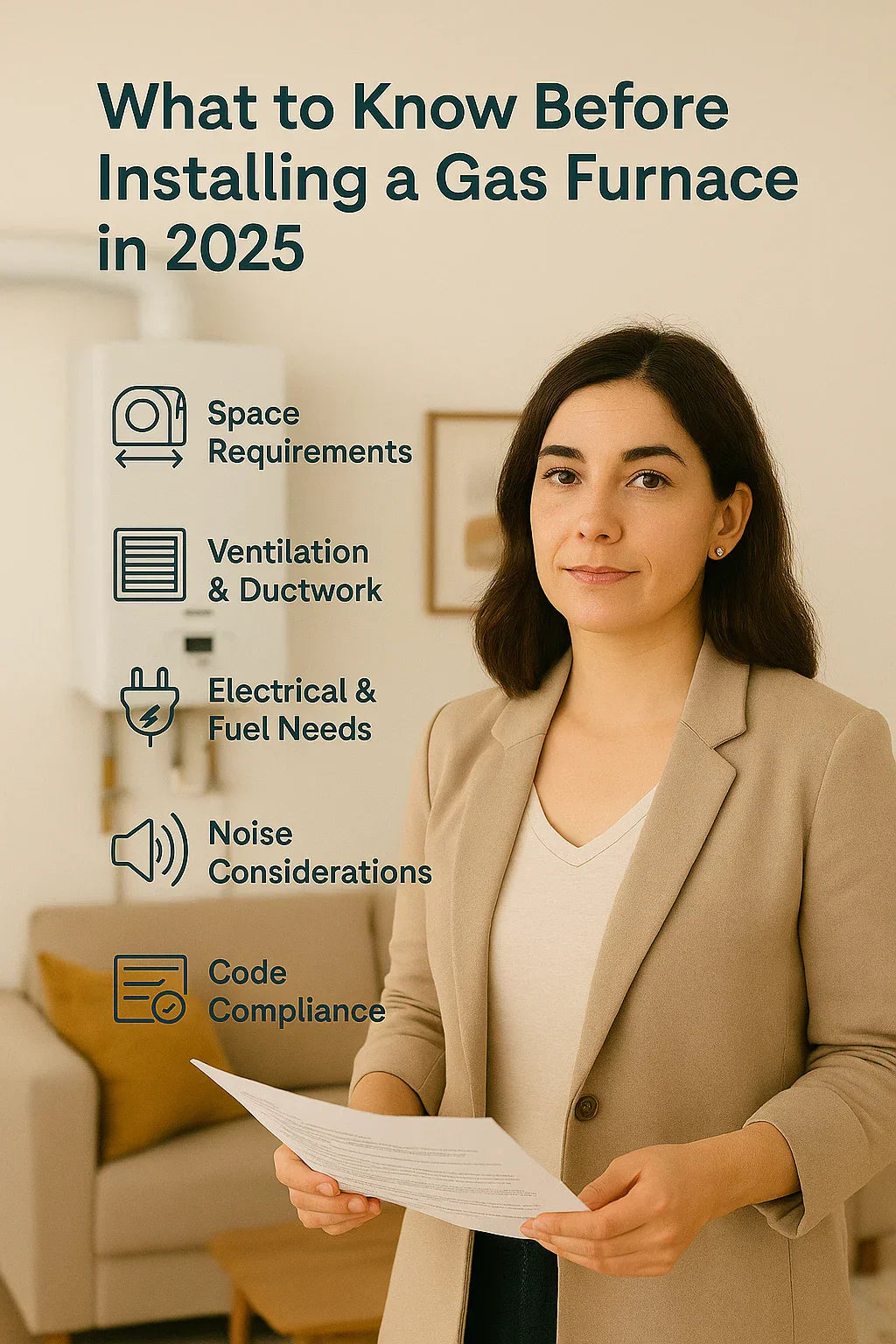🔍 Introduction: Why Pre-Installation Knowledge Saves You Money
Installing a gas furnace is one of the most important home upgrades you can make for comfort and efficiency. But many homeowners rush into installation without understanding space, venting, electrical, code, and warranty factors that can affect safety, budget, and long-term performance.
This guide will walk you through:
-
Space and clearance requirements
-
Venting and gas line needs
-
Electrical and thermostat compatibility
-
Permit and code considerations
-
Noise and location planning
-
Choosing a qualified installer
-
What to expect on installation day
By planning carefully, you can avoid unexpected costs, installation delays, and long-term inefficiencies.
📏 Space and Clearance Requirements
Your new furnace needs adequate space around it for airflow, maintenance, and code compliance. Check:
-
Manufacturer’s required clearance (often 3-6 inches on sides, 1-2 feet in front)
-
Location relative to walls, water heaters, and laundry machines
-
Sufficient airflow in the utility closet or basement
If your space is tight, consider a smaller footprint high-efficiency furnace or evaluate alternative installation locations.
🌬️ Venting and Gas Line Needs
Gas furnaces require:
-
Proper venting (PVC for high-efficiency, metal flue for standard units)
-
Adequate combustion air supply
-
A gas line of sufficient size and shutoff valve
Consult your installer to confirm:
-
If your existing vent is compatible
-
If a new vent or chimney liner is needed
-
If your gas line needs upsizing to handle furnace BTU requirements
⚡ Electrical and Thermostat Compatibility
Gas furnaces need electrical power for ignition systems, blowers, and control boards. Before installation:
-
Check if your breaker panel has available capacity
-
Verify your thermostat is compatible (single-stage, two-stage, variable-speed)
-
Consider upgrading to a programmable or smart thermostat to maximize efficiency
Review Energy Star’s thermostat recommendations to pair with your furnace.
🏗️ Permit and Code Compliance
Many jurisdictions require permits for furnace replacement or installation to ensure safety and code adherence.
Your installer should:
-
Pull necessary permits before installation
-
Schedule inspections post-installation
-
Ensure the furnace meets local and national code standards (clearance, venting, combustion air, and gas line safety)
Visit HVAC.com’s installation code guide for typical requirements.
🔈 Noise and Location Planning
While modern gas furnaces are quieter, planning can reduce operational noise:
-
Avoid placing furnaces near bedrooms or living spaces if possible
-
Use vibration isolation pads
-
Ensure ductwork is properly sealed to reduce whistling
👷 Choosing a Qualified Installer
Selecting a qualified HVAC installer protects your warranty and ensures safe operation. Look for:
-
Proper licensing and insurance
-
Experience with your furnace brand and type
-
Positive reviews and references
-
Willingness to perform a Manual J calculation to confirm sizing
Review how to find a reputable installer.
📅 What to Expect on Installation Day
-
Arrival and prep: Installer shuts off gas and power.
-
Removal: Old furnace is disconnected and removed.
-
Site preparation: New venting and gas lines installed if needed.
-
Furnace placement: New unit is positioned and leveled.
-
Connection: Gas, venting, and electrical are connected.
-
Testing: System is tested for leaks, airflow, and performance.
-
Cleanup and walkthrough: Installer explains thermostat and furnace operation.
The entire process typically takes 4-10 hours depending on complexity.
💡 Conclusion: Smart Planning Makes for Smooth Installation
Taking time to prepare before installing a gas furnace helps ensure:
✅ Proper airflow and space
✅ Safe venting and gas supply
✅ Electrical readiness
✅ Permit compliance
✅ Low noise operation
✅ Professional, code-compliant installation
This preparation will save you money, protect your investment, and keep your home warm for years to come.
In the next article we will know more about: How Much Does It Cost to Install a Gas Furnace? Real-World Estimates for 2025







